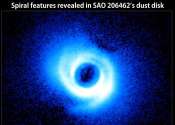The puzzle of the origin of elements in the universe
A rare nuclear reaction that occurs in red giants has been observed for the first time at the Gran Sasso National Laboratory in Italy. This result was achieved by the LUNA experiment, the world's only accelerator facility ...









